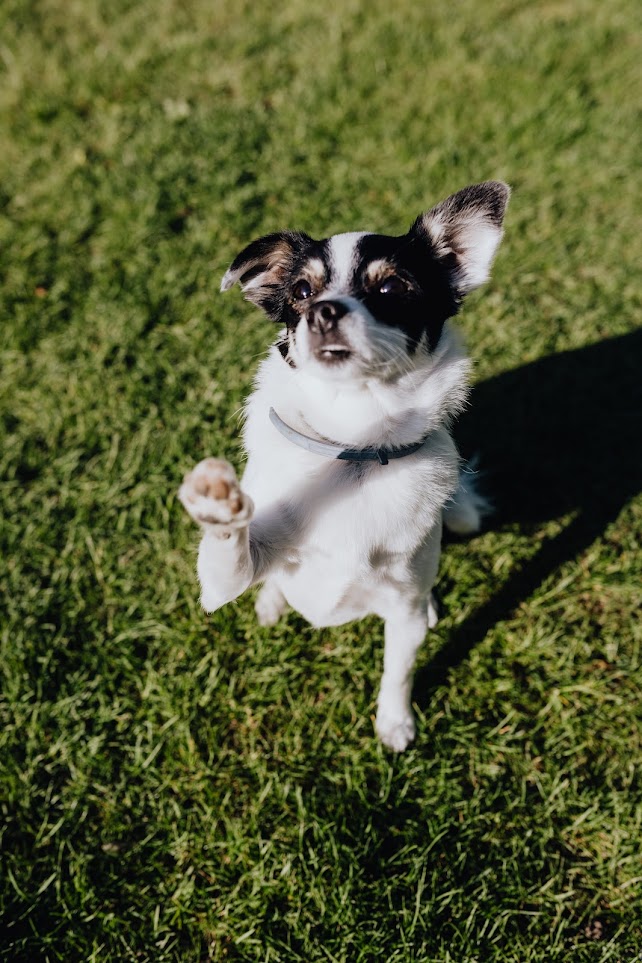How to Make Your Dog Stop Barking
Dogs use growls to express themselves. Growling is a sign of discomfort, fear, possessiveness, hostility, or amusement in dogs. To interpret the vocalization and choose how to react to the growl, you must ascertain the cause of the growl from the dog.
Learn the various causes of a dog's growling so you can respond appropriately, whether it's during play or to deal with a stressor.
What Makes Dogs Growl?
Your dog may communicate with you by growling. It growls to let you know that it is scared, hurt, or that it needs you to leave its property or territory.
Often, when a dog starts to growl, your immediate reaction is to run away from it or reprimand it. It's crucial to handle a growling dog properly because it can be the first indication of more severe aggressiveness.
When your dog growls, it is trying to communicate with you. An underlying issue can be detected by growling. It's important to find out why your dog is growling and deal with that problem rather than trying to teach it not to growl. The growling will likely lessen or end once the underlying issue has been resolved.
Pain
Your dog may growl in several circumstances. If your dog is growling out of discomfort or disease, you might notice that it only does so when specific body regions are touched.
Other signs of disease or injury that the dog may display include loss of appetite, lethargy, weight loss, biting or licking particular body parts, or hair loss.
Calling your veterinarian right away is the best course of action if your dog is growling because it is in pain or ill. The right medical care should relieve the suffering, which should reduce or end the growling.
Fear
The growls from your dog are most likely caused by fear if they are frequently directed towards strangers, specific individuals like youngsters or men, or when the dog is in an unusual setting.
A dog may also growl when something frightens them, such as when there are thunderstorms or fireworks. Some violent dogs may be unwell or have an anxiety issue.
The obvious course of action, if you can identify the source of the dog's dread, is to get rid of it (if at all possible). Contact a behavior professional for assistance if identifying the source or eliminating the cause appears to be impossible.
Territoriality
A dog that growls at the mailman, the delivery person, or any other person that the dog believes doesn't belong on its property is an illustration of this.
If a dog is growling out of territorial aggressiveness, you might also hear it growling over other areas of the house, like the couch or the bed. When someone enters its perceived territory, the dog may growl in response.
This "someone" can be a complete stranger or even a relative. This kind of behavior can be changed, and a specialist is best suited to diagnose it and offer assistance.
Aggression Possession
This practice is also known as resource guarding. When someone approaches a dog who exhibits aggression when eating, playing with a particular toy, or chewing on a bone or rawhide, it may growl. A training regimen that teaches your dog appropriate responses can help you avoid this reaction.
Enjoying It
Some dogs will growl out of the blue when they're having a good time. When two (or more) dogs are playing with one another or if tug toys are being used in the game, this growling frequently happens.
Typically, this is a harmless way to communicate emotions. However, it should be closely watched, especially in puppies, as growling can quickly escalate into aggression.
Tips for Quitting Growling
If you own a dog, you probably become agitated when it growls. Your initial response might be to correct or reprimand the dog to stop it from snarling.
That is never a wise move. You may prevent your dog from warning you that it might bite by teaching it that growling is unacceptable behavior.
Dogs that bite without provocation may have been the subject of stories. However, in many instances, this is because the owners taught their dogs to not growl as a warning initially.
The secret to persuading a dog to quit growling is to address the underlying issue rather than trying to stop the growls itself. The dog won't need to growl after the discomfort, fear, possessive hostility, or territoriality has been addressed.
Deeper Training
Possession aggressiveness, terror, and tyranny are all severe behavioral issues. A training program may work well for the dog, depending on the severity of the behavioral issue, or a far more extensive behavior modification program may be required.
You can assess the dog and decide the best course of action for resolving these difficulties with the assistance of a dog trainer or animal behaviorist. When working with this kind of trainer, be as explicit as you can about what you believe sets off the growling.
The dog will probably be gradually trained by the trainer to accept the trigger and refrain from growling in its presence.
Future Steps
Don't ignore the growling while you're trying to figure out what's causing it; if you do, it can get worse. Until you determine the cause of your dog's growling, exercise caution around it.
Additionally, until the situation is under control, you might wish to assist your dog in changing its behavior. Close the window curtains and block any possible sightlines, for instance, if your dog constantly growls at the mailman while you are trying to solve the issue.
To avoid a dog bite, try to remove triggers, stay away from stressful situations, and warn people and other dogs to keep their distance. For instance, you might not want to take your dog to a dog park, introduce it to other dogs, or host a boisterous party until you get






